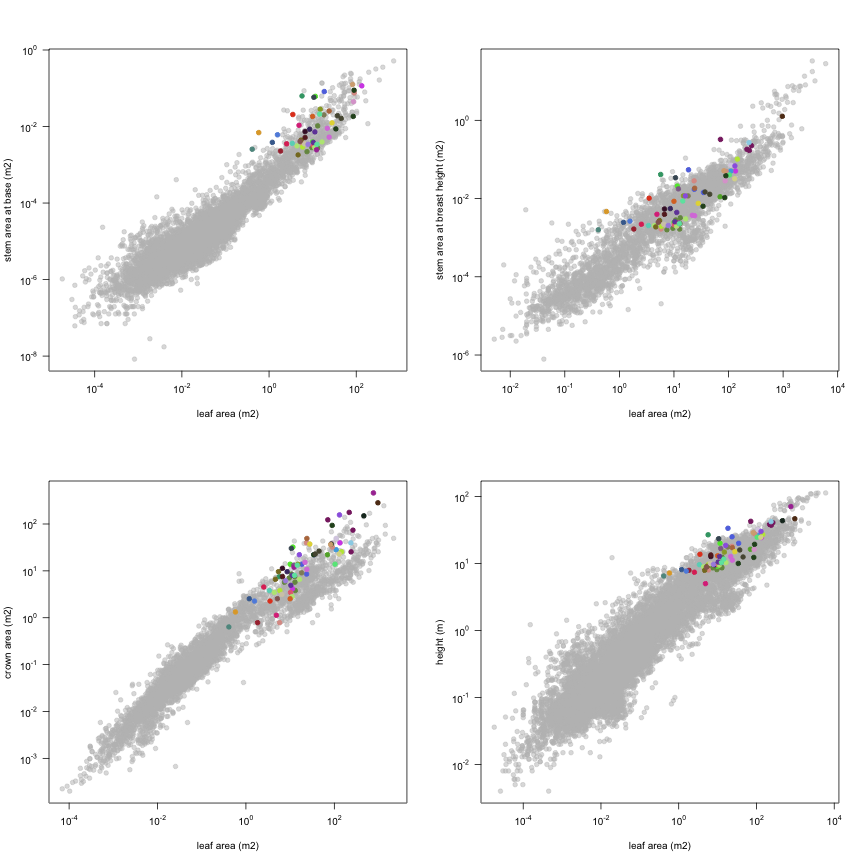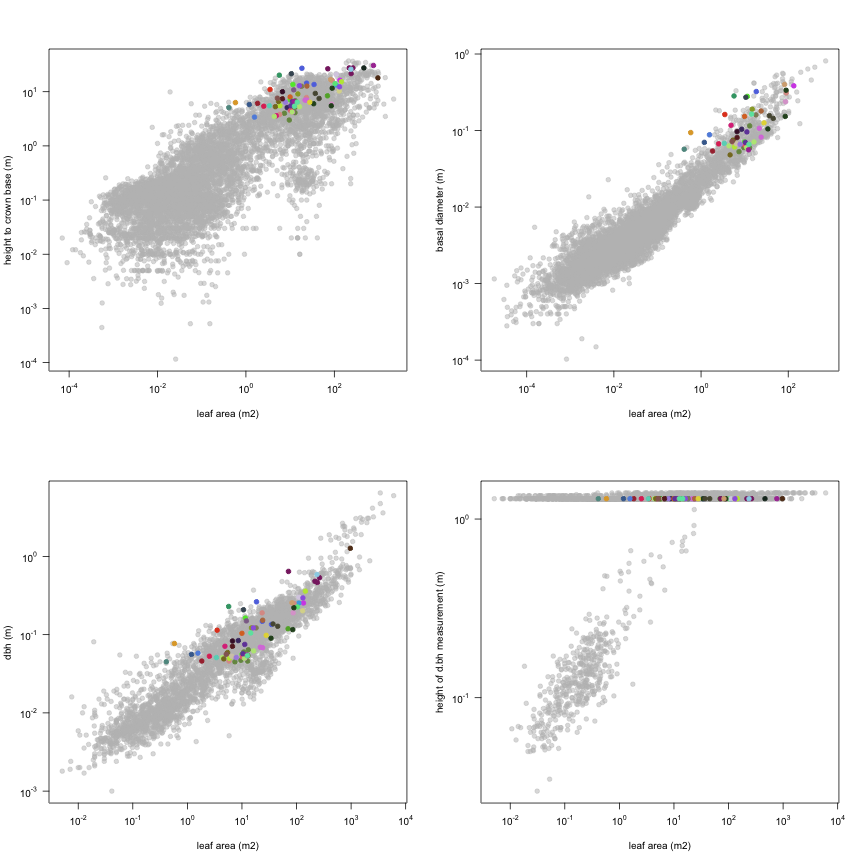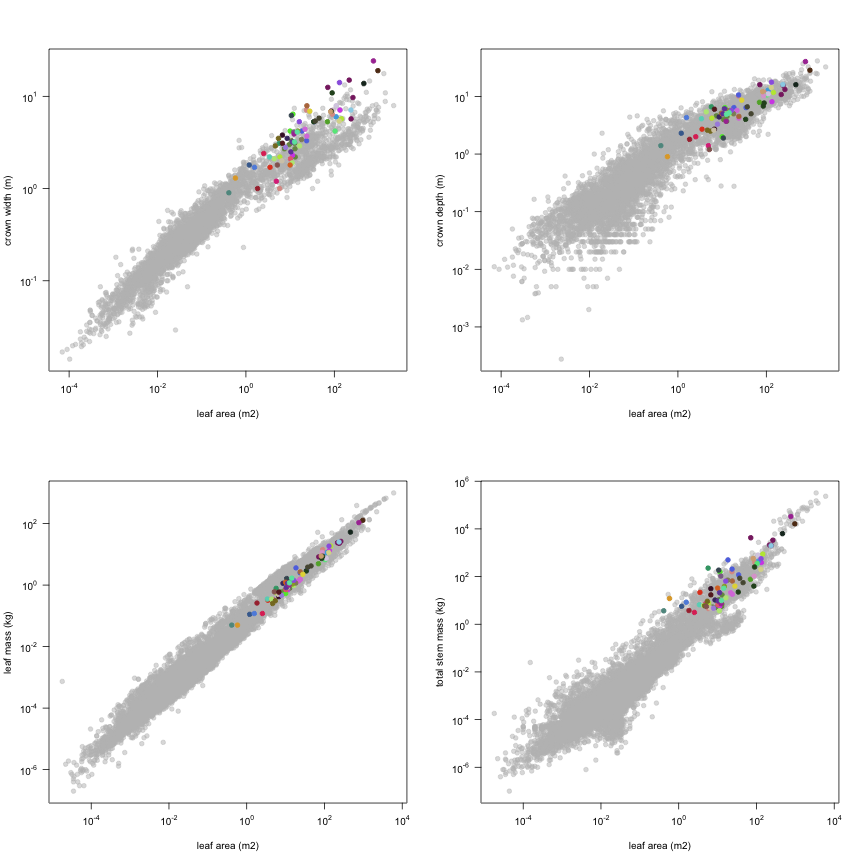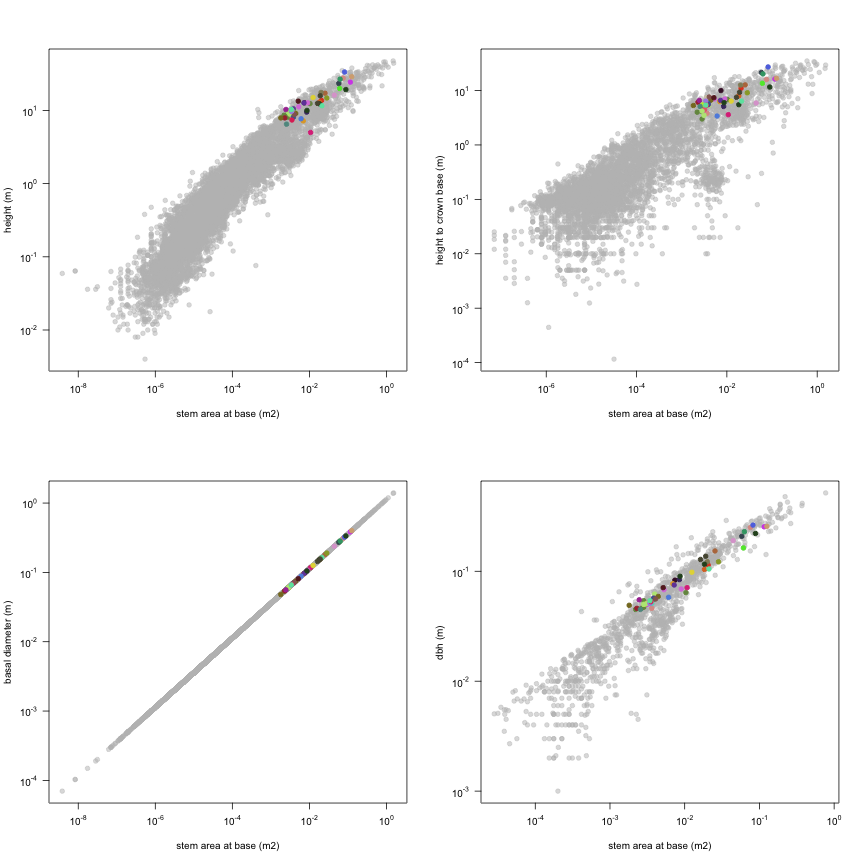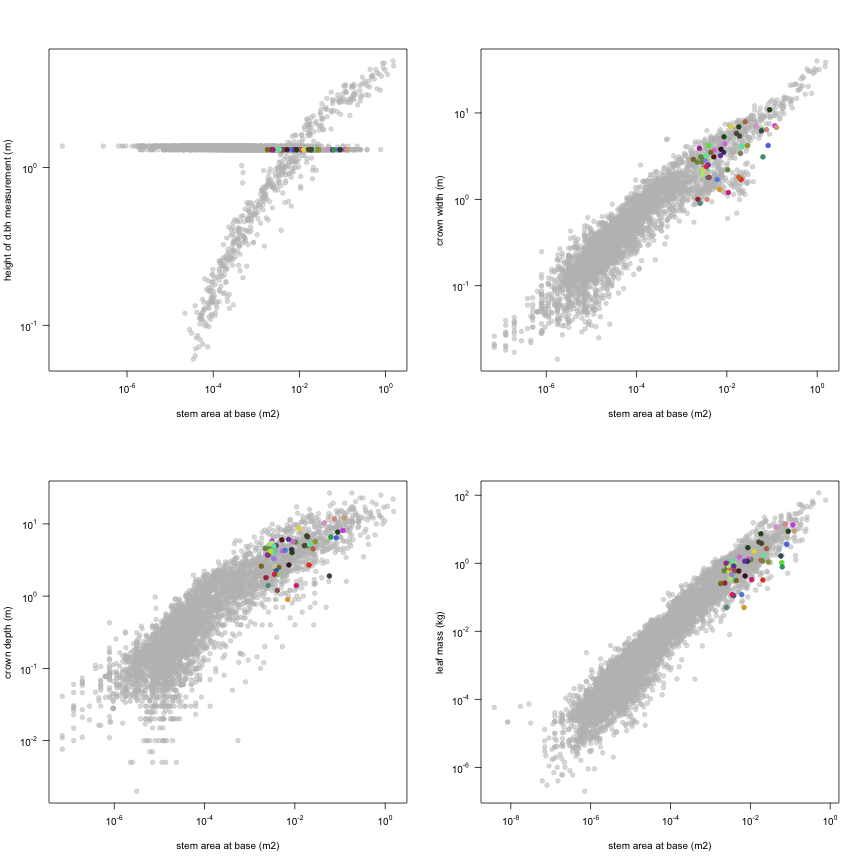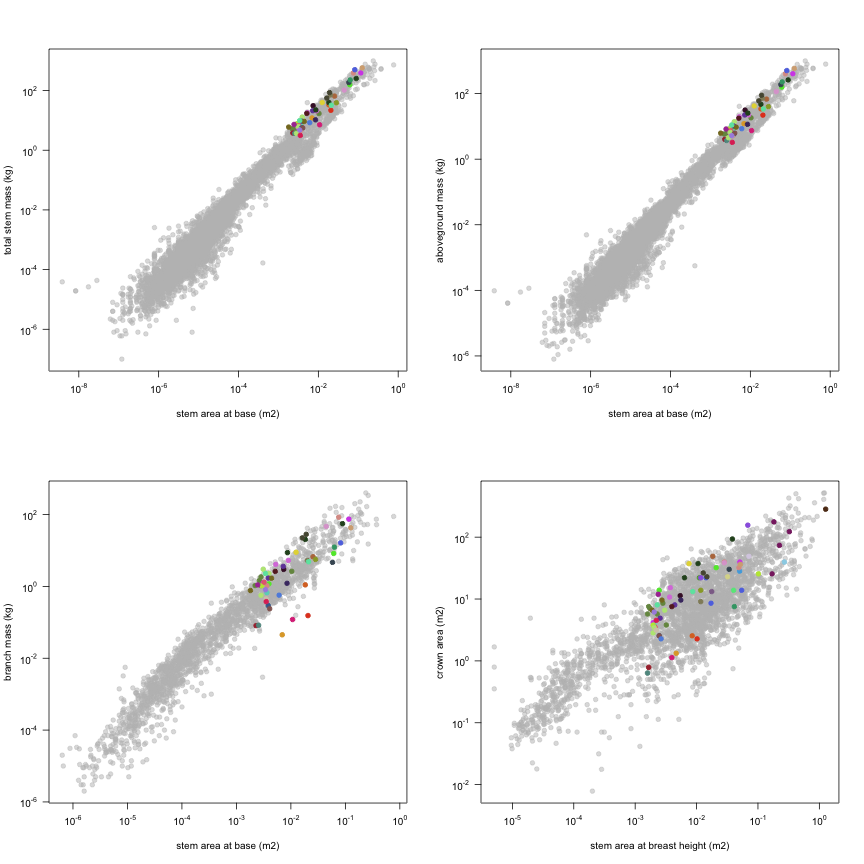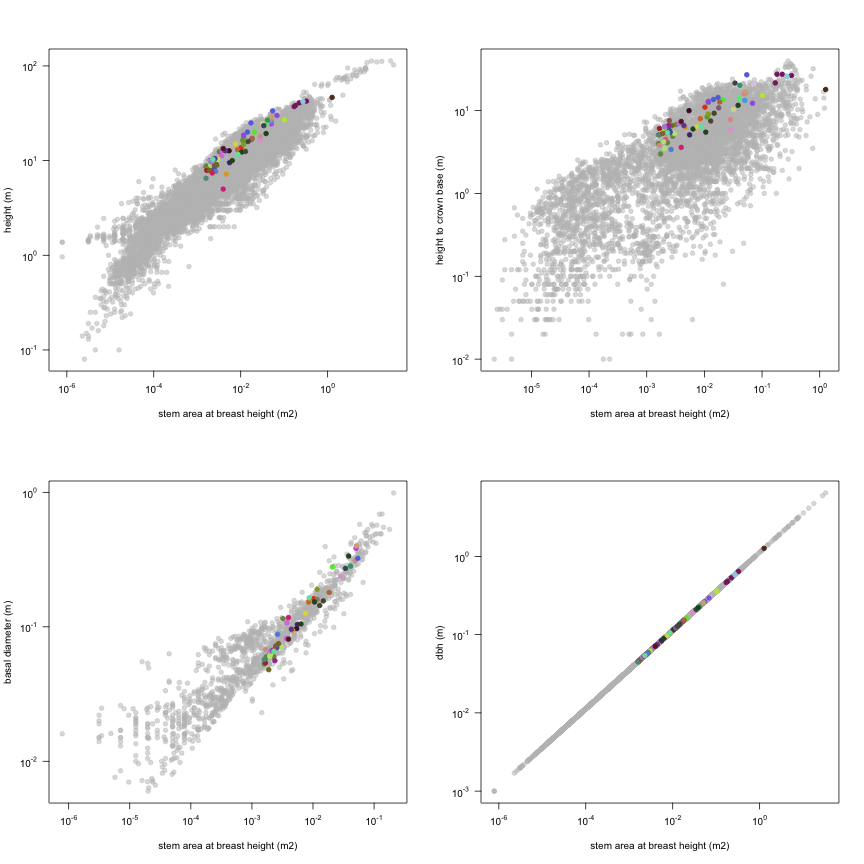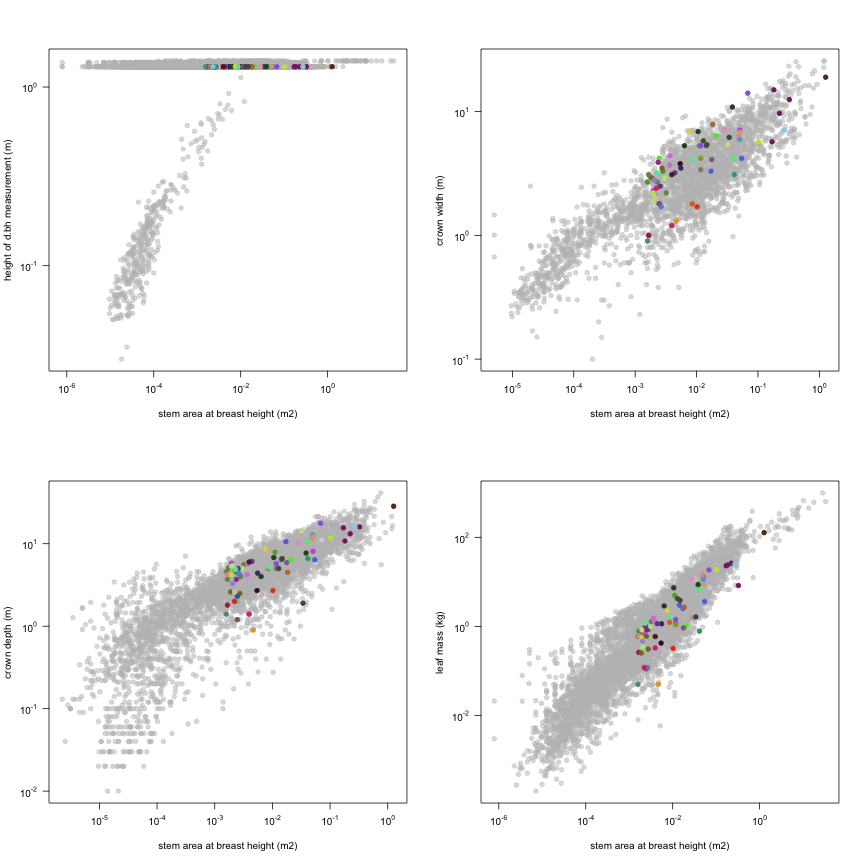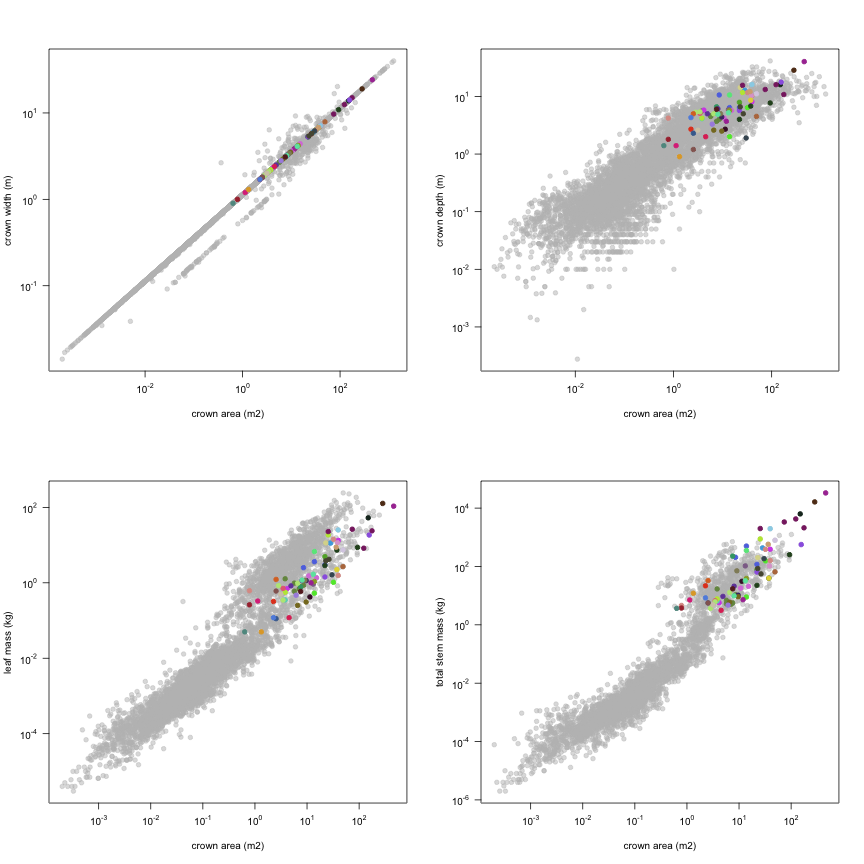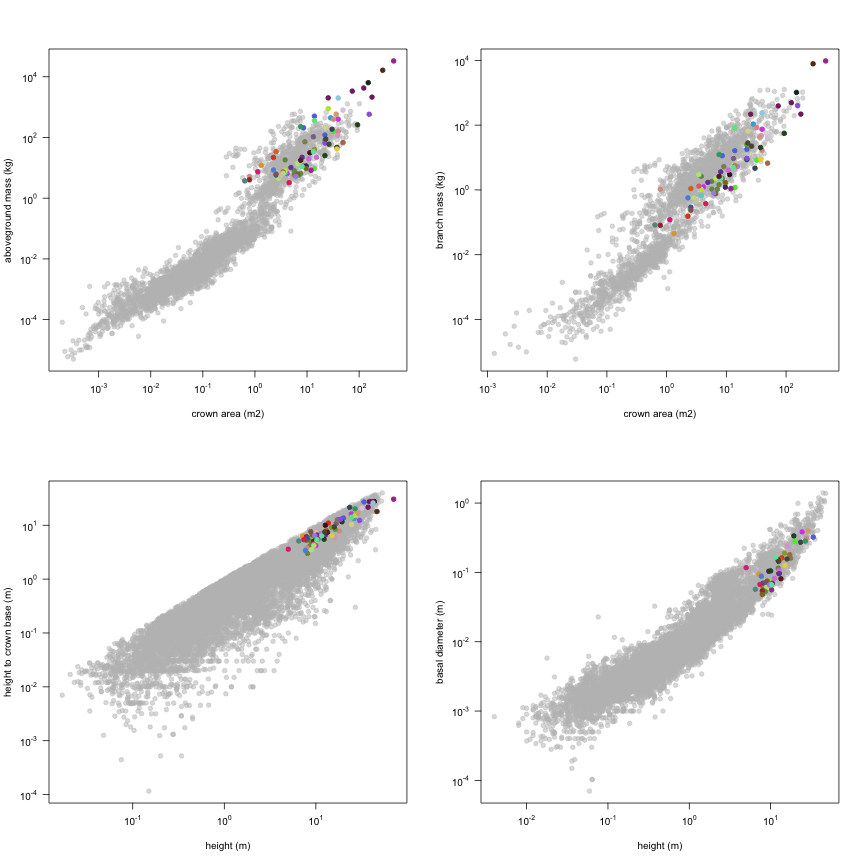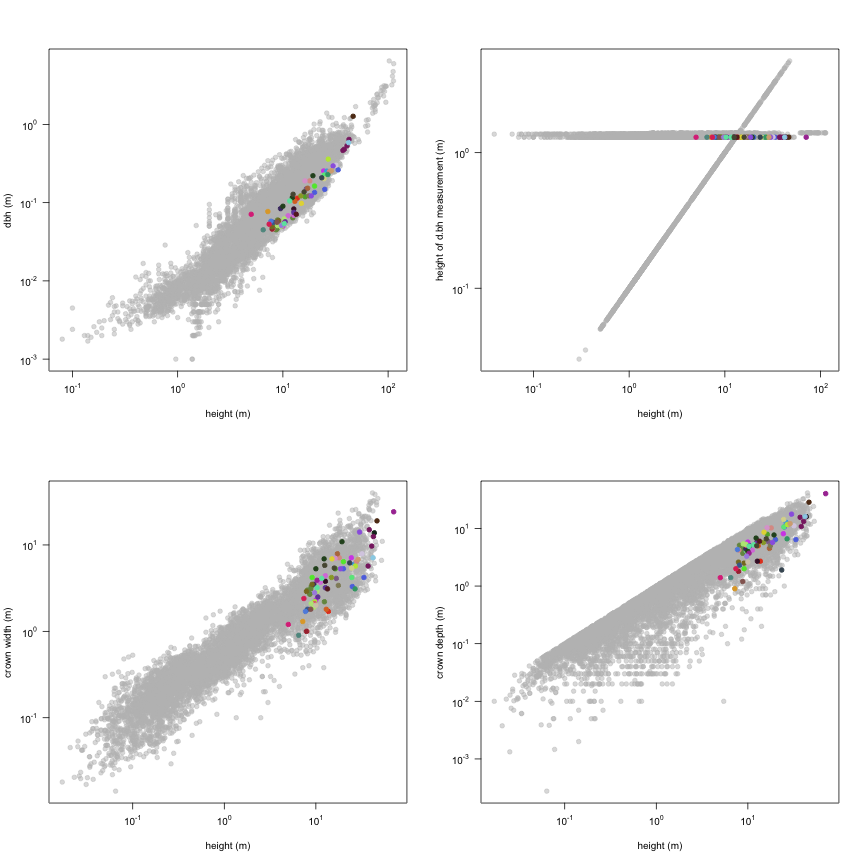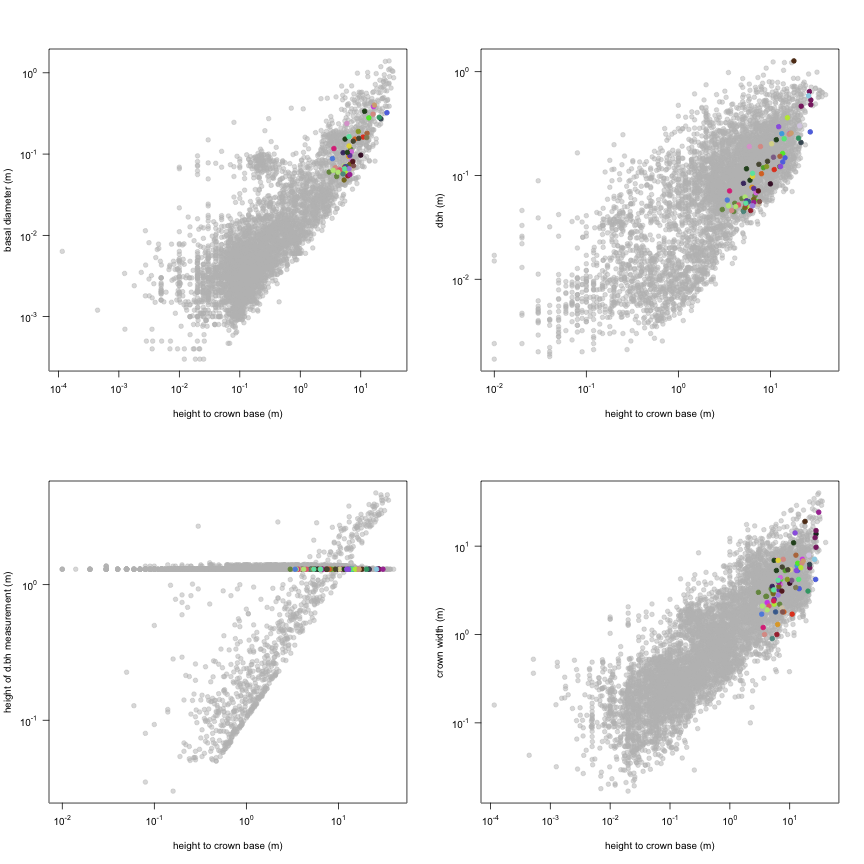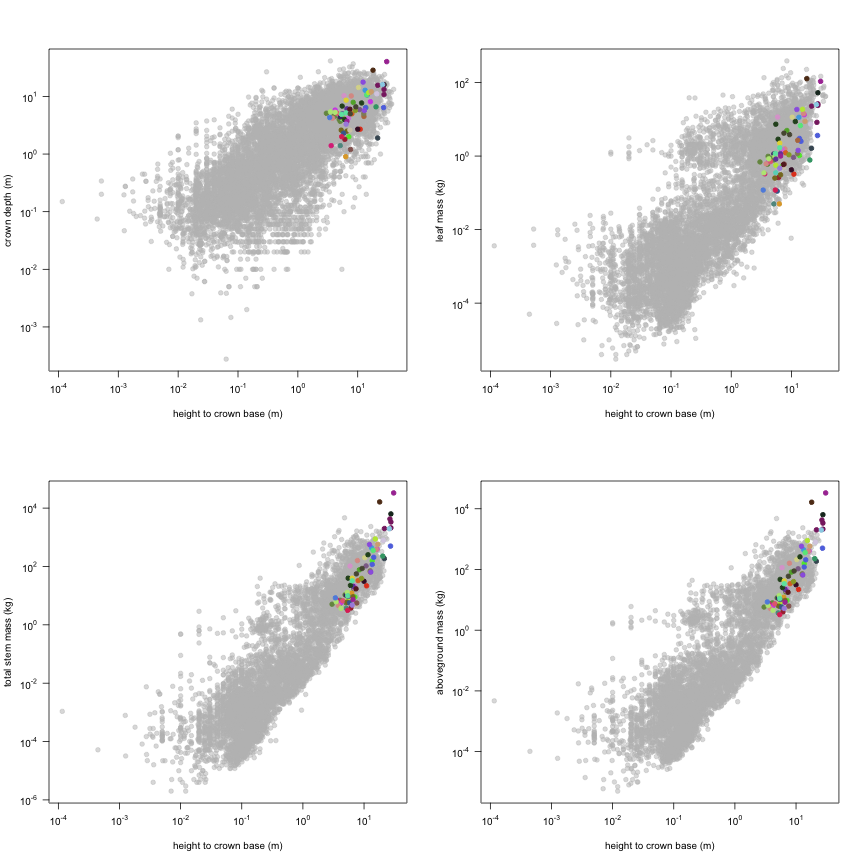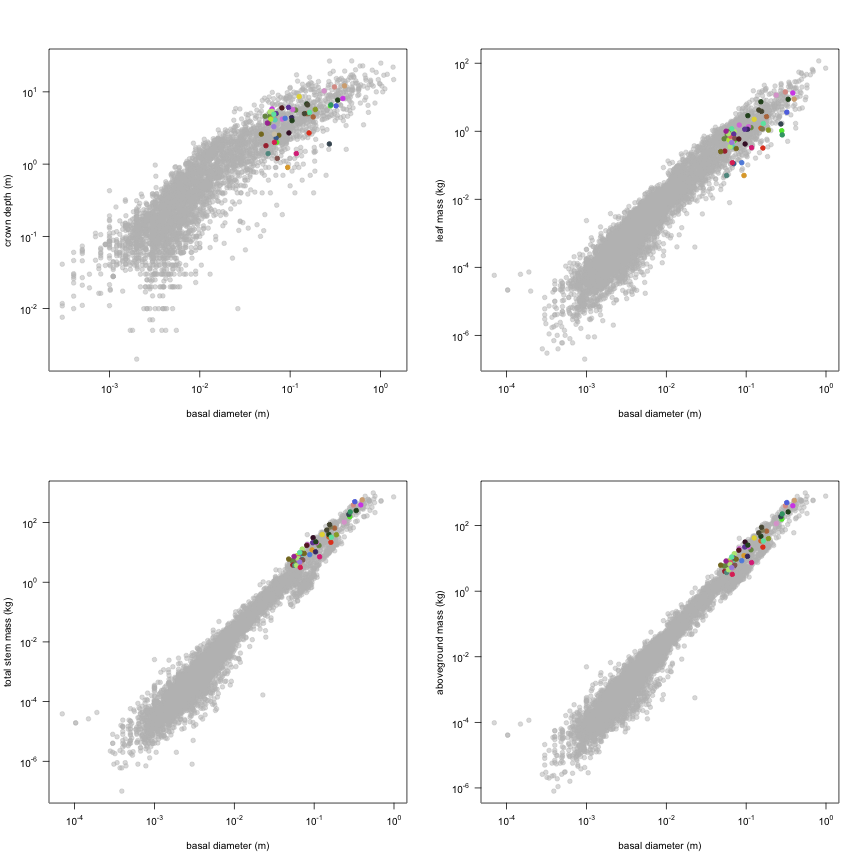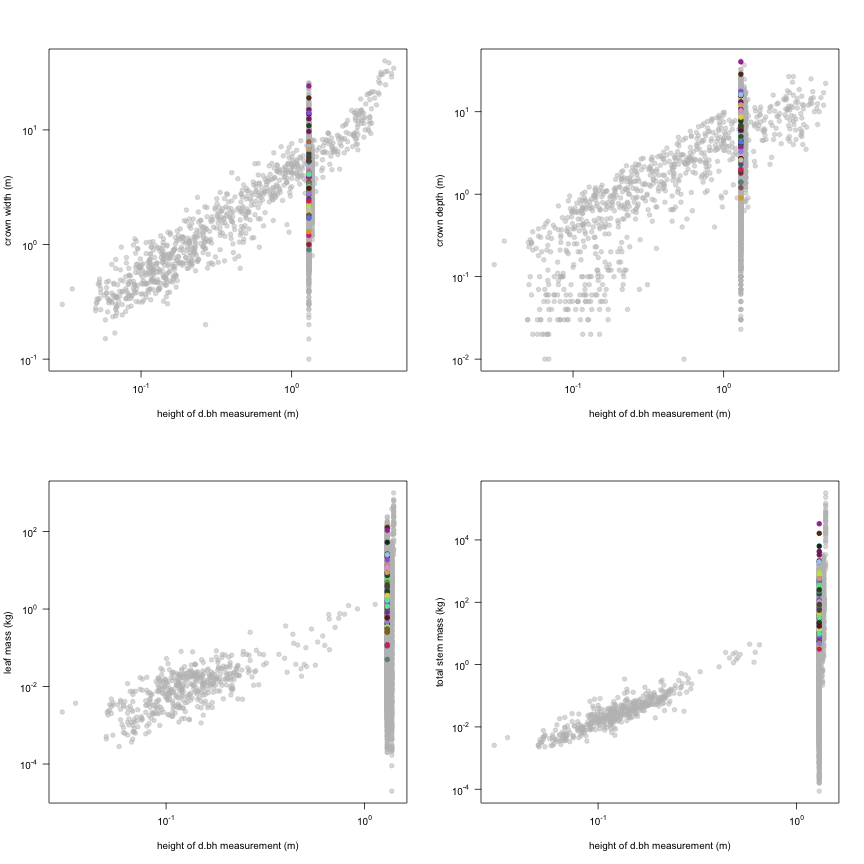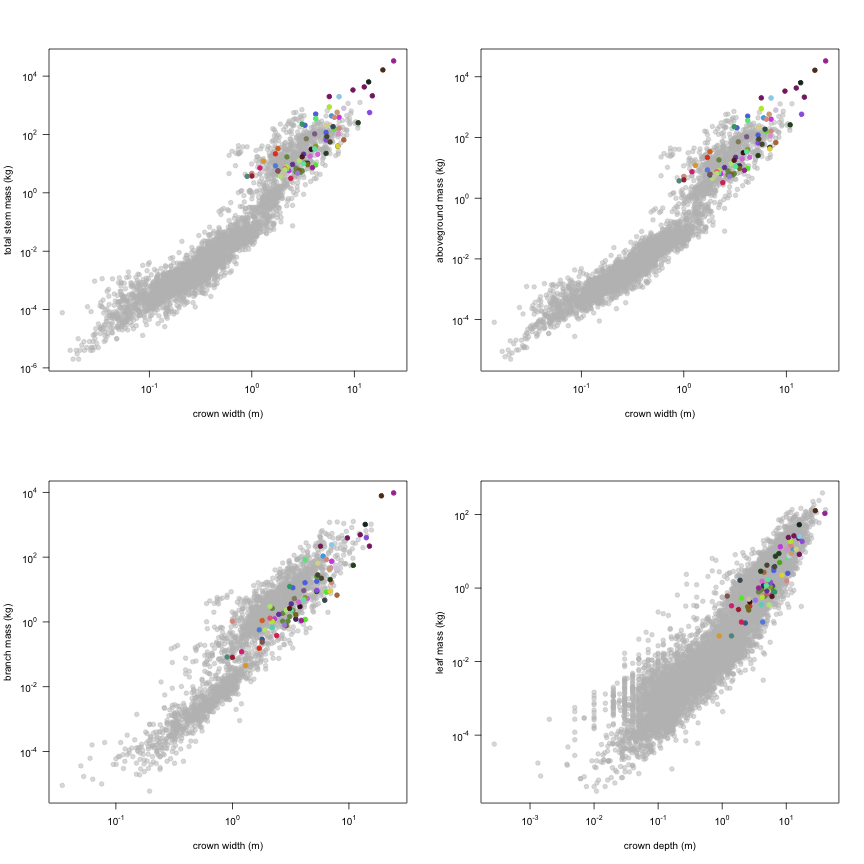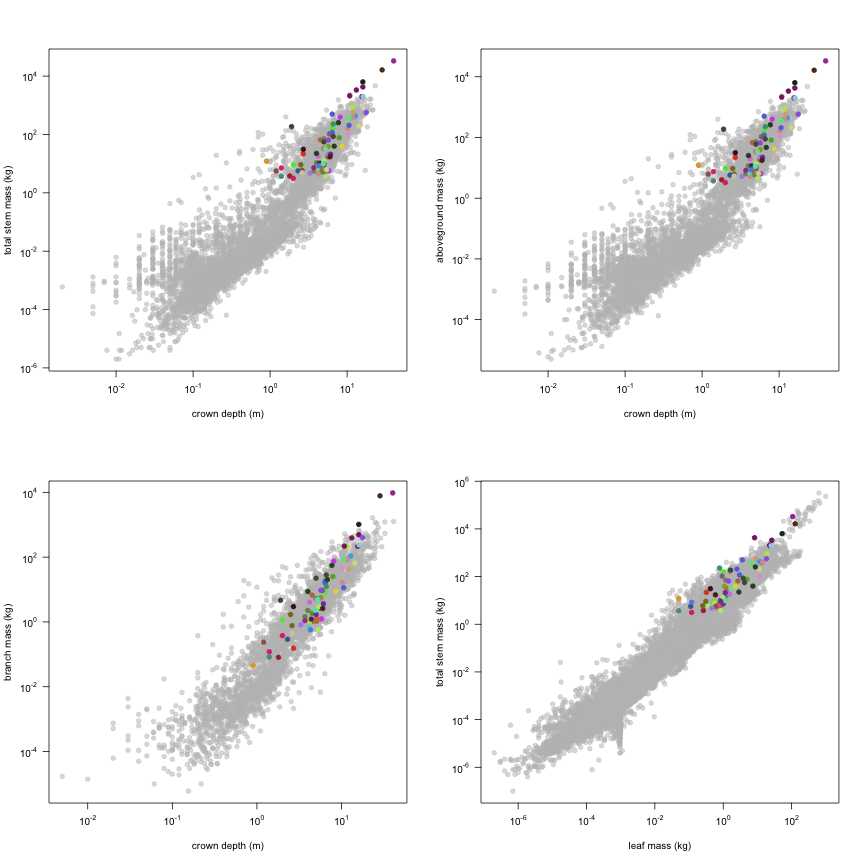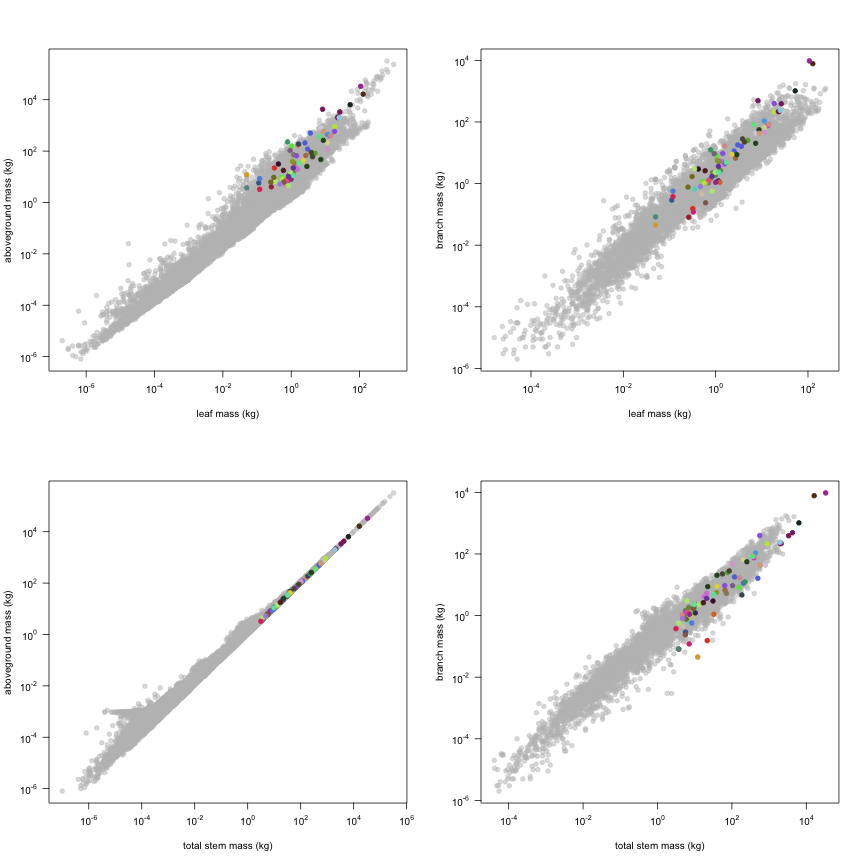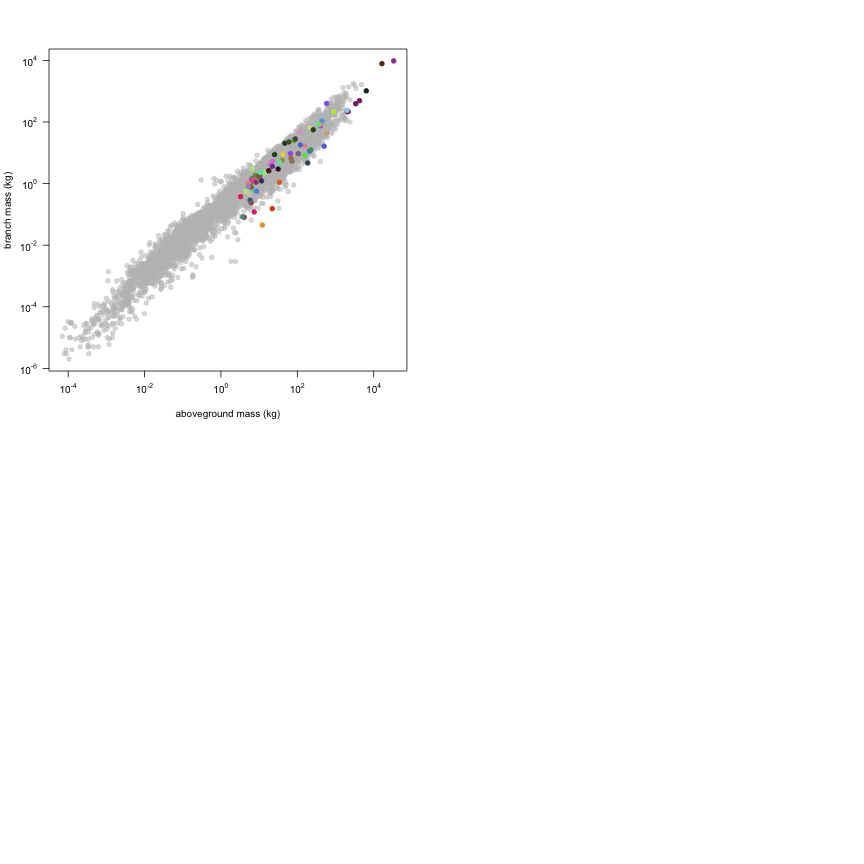-
Notifications
You must be signed in to change notification settings - Fork 19
Yamakura1986
Data contributor: Takuo Yamakura
Email: [email protected]
Address:
- Graduate School of Science, Osaka City University, Sugimoto 3-3-138, Sumiyoshi, Osaka 558-8585, Japan
Citation: Yamakura T, Hagihara A, Sukardjo S and Ogawa H (1986). 'Tree size in a mature dipterocarp forest stand in Sebulu, East Kalimantan, Indonesia.' Southeast Asian Studies, 23(4), pp. 452-478.
DOI:
Abstract: The forest plant size, especially tree size, was examined in a mature dipterocarp forest stand in Sebulu, East Kalimantan, Indonesia. One hundred and ninety-one living trees 1.3m high and higher, three lianas living on dead trees, one small standing liana, and one palm were felled, and their sizes were measured using the stratified clip technique and recorded. Of these sample plants, the largest was a Shorea laevis tree : total height was 70.7m; stem diameter at the terminal of its buttresses, 4.6m high, was 130.5cm; stem volume was 41.1m^3; stem dry weight was 33129.768kg; branch dry weight was 9586.120kg; leaf dry weight was 107.614kg; leaf area was 767.372m^2. The plant mass of dependent plants living on independent plants was also measured using the stratified clip technique. The aboveground biomass in a narrow 0.125ha sampling spot was calculated by summing the plant mass values of individual sample plants. It totaled 872.949t/ha in dry weight for all living plants and 7.962ha/ha in leaf area, although these values were too large to represent the mean biomass of the dipterocarp forest in the study area because that forest patch included the huge emergent tree.
The dataset includes records for 76 individuals from 50 species belonging to 19 family(ies), presenting 1 functional type(s), growing in 1 condition(s) within 1 major type(s) of habitat, with data included for the following variables:
| Variable | Label | Units | N | Min | Median | Max |
|---|---|---|---|---|---|---|
| latitude | Latitude | deg | 76 | -1.5 | -1.5 | -1.5 |
| longitude | Longitude | deg | 76 | 117 | 117 | 117 |
| a.lf | Leaf area | m2 | 76 | 0.41 | 13 | 968 |
| a.stba | Stem area at base | m2 | 55 | 0.0018 | 0.0061 | 0.13 |
| a.stbh | Stem area at breast height | m2 | 74 | 0.0016 | 0.007 | 1.3 |
| a.cp | Crown area | m2 | 76 | 0.64 | 12 | 460 |
| h.t | Height | m | 76 | 5 | 13 | 71 |
| h.c | Height to crown base | m | 76 | 3 | 7.4 | 30 |
| d.ba | Basal diameter | m | 55 | 0.048 | 0.088 | 0.4 |
| d.bh | Dbh | m | 74 | 0.045 | 0.094 | 1.3 |
| h.bh | Height of d.bh measurement | m | 76 | 1.3 | 1.3 | 1.3 |
| d.cr | Crown width | m | 76 | 0.9 | 3.8 | 24 |
| c.d | Crown depth | m | 76 | 0.9 | 5.3 | 40 |
| m.lf | Leaf mass | kg | 76 | 0.05 | 1.2 | 127 |
| m.st | Total stem mass | kg | 76 | 3.1 | 32 | 33130 |
| m.so | Aboveground mass | kg | 76 | 3.3 | 33 | 33237 |
| m.br | Branch mass | kg | 76 | 0.045 | 4.8 | 9586 |

And locally within the country:
## Error - location lies outside country borders. Perhaps add more decimal places?
The sites sampled are:
| Location | Longitude | Latitude | Vegetation |
|---|---|---|---|
| Sebulu, East Kalimantan Province, Indonesia | 116.967 | -1.5 | Tropical rainforest |
The growing conditions of sampled plants was:
| Location | growingCondition |
|---|---|
| Sebulu, East Kalimantan Province, Indonesia | field wild |
| Species | Family | Pft |
|---|---|---|
| Aporosa elmeri | Euphorbiaceae | evergreen angiosperm |
| Aporosa sphaedophora | Euphorbiaceae | evergreen angiosperm |
| Artocarpus anisophyllus | Moraceae | evergreen angiosperm |
| Baccaurea deflexa | Euphorbiaceae | evergreen angiosperm |
| Baccaurea kunstleri | Euphorbiaceae | evergreen angiosperm |
| Baccaurea pendula | Euphorbiaceae | evergreen angiosperm |
| Baccaurea sp. | Euphorbiaceae | evergreen angiosperm |
| Barringtonia macrostachy | Lecythidaceae | evergreen angiosperm |
| Beilschmiedia sp. | Lauraceae | evergreen angiosperm |
| Dacryodes rugosa | Burseraceae | evergreen angiosperm |
| Dialium indum | Leguminosae | evergreen angiosperm |
| Dialium platycephalum | Leguminosae | evergreen angiosperm |
| Dialium sp. | Leguminosae | evergreen angiosperm |
| Dillenia excelsa | Dilleniaceae | evergreen angiosperm |
| Dillenia excemia | Dilleniaceae | evergreen angiosperm |
| Dipterocarpus crinitus | Dipterocarpaceae | evergreen angiosperm |
| Dryobalanops sp. | Dipterocarpaceae | evergreen angiosperm |
| Drypetes sp. | Euphorbiaceae | evergreen angiosperm |
| Elaeocarpus sp. | Elaeocarpaceae | evergreen angiosperm |
| Eugenia cuprea | Myrtaceae | evergreen angiosperm |
| Eugenia sp. | Myrtaceae | evergreen angiosperm |
| Girroniera nervosa | Ulmaceae | evergreen angiosperm |
| Hopea mangerawan | Dipterocarpaceae | evergreen angiosperm |
| Horsfieldia grandis | Myristicaceae | evergreen angiosperm |
| Litsea noronhae | Lauraceae | evergreen angiosperm |
| Litsea sp. | Lauraceae | evergreen angiosperm |
| Mallotus echinatus | Euphorbiaceae | evergreen angiosperm |
| Malotus echinatus | Euphorbiaceae | evergreen angiosperm |
| Milletia sericea | Leguminosae | evergreen angiosperm |
| Myristica sp. | Myristicaceae | evergreen angiosperm |
| Neoscortechinia kingii | Euphorbiaceae | evergreen angiosperm |
| Ochanostachys amentacea | Olacaceae | evergreen angiosperm |
| Ochanostachys sp. | Olacaceae | evergreen angiosperm |
| Ostodes macrophylla | Euphorbiaceae | evergreen angiosperm |
| Oxymitra grandiflora | Annonaceae | evergreen angiosperm |
| Polaquem dasyphyllum | missing | evergreen angiosperm |
| Polyalthia glauca | Annonaceae | evergreen angiosperm |
| Polyalthia rumphii | Annonaceae | evergreen angiosperm |
| Pometia tomentosa | Sapindaceae | evergreen angiosperm |
| Santiria operculata | Burseraceae | evergreen angiosperm |
| Santiria tomentosa | Burseraceae | evergreen angiosperm |
| Shorea laevis | Dipterocarpaceae | evergreen angiosperm |
| Shorea leprosula | Dipterocarpaceae | evergreen angiosperm |
| Shorea ovalis | Dipterocarpaceae | evergreen angiosperm |
| Sindora sp. | Fabaceae | evergreen angiosperm |
| Sterculia rubiginosa | Malvaceae | evergreen angiosperm |
| Strombosia rotundifolia | Olacaceae | evergreen angiosperm |
| Strombosia sp. | Olacaceae | evergreen angiosperm |
| Unidentified sp. | missing | evergreen angiosperm |
| Xanthophyllum heteropleurum | Polygalaceae | evergreen angiosperm |
Sampling strategy: One-hundred and nintey-one trees were felled, and their total height, clear bole length, crown diameter, stem diameter at 1/10 of Height, stem diameter just below the lowest living branch, stem diameters at 0.0 and 1.3 m aboveground and stem diameters at 5.0 m intervals were measured. Biomass from felled trees was estimated using the stratified clip technique. The tree body in each stratum (0.0-1.3 m, 1.3-5 m, 5-10 m, and then at intervals of 5m) was separated into stem, branches and leaves and each organ was weighed with balances appropriate to the size of the organ. Subsamples of stems, branches and leaves were taken from each stratum of sample trees for estimating the ratio of fresh/dry mass, specific gravity of stem and leaf area. Leaf samples were either traced by hand or photocopied.
Leaf area: Leaf area for each stratum was calculated by multipling total leaf weight by the corresponding specific leaf area of subsampled leaves (traced by hand or photocopied and calculated using a planimeter or counting squares), and then the leaf area values of all of the strata were added to obtain leaf area per tree.
Stem cross sectional area: Stem diameter was measured at multiple points along the tree (0.0, 1/10 the height of the tree, 130 cm aboveground, just below the lowest living branch, and at 5.0 m intervals along the full height of the tree).
Height: Height was measured as the vertical distance from the ground surface to the highest apex of each tree.
Biomass: Trees were separated into stems, branches and leaves according to different height strata (0-1.3m, 1.3-5m, 5-10m and then at intervals of 5 m), and then weighed fresh in the field. Sub-samples from each strata were dried at 80oC for at least 7 days to obtain fresh mass/dry mass ratios.
Growth environment: Field, wild.
Year collected: 1980-1981
This is how the study Yamakura1986 fits in the entire dataset (grey). each colour represents a species. A legend of species names with colours is included at the end for reports with 1 < n < 20 species.
